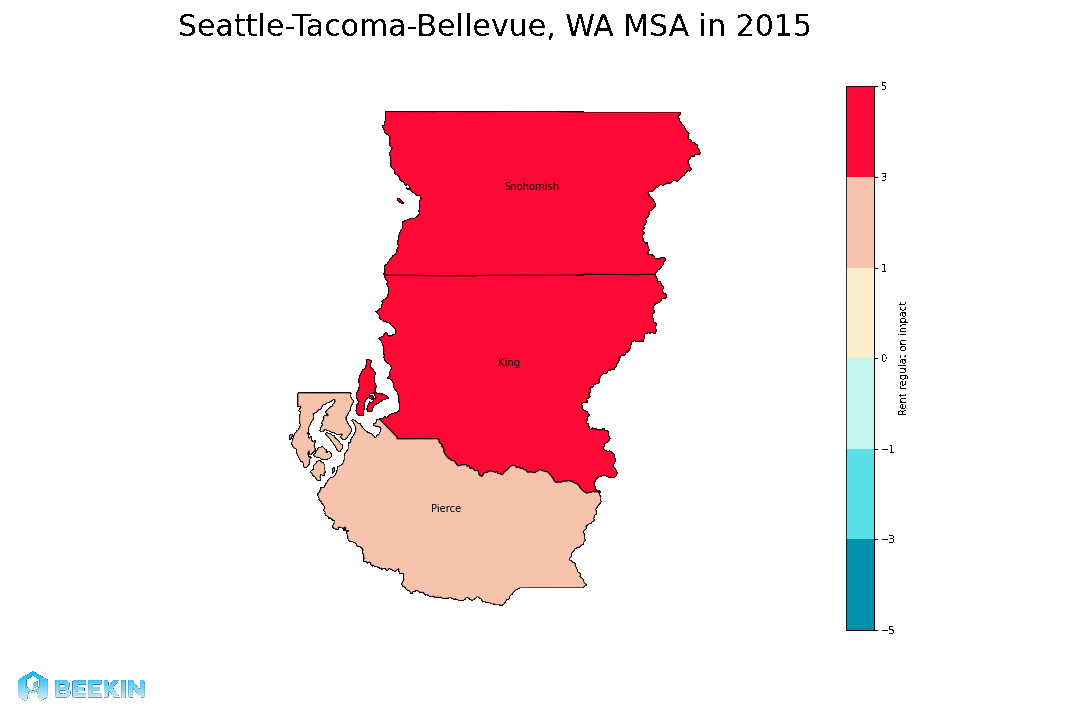Stable Residents, Stable Properties: Perspectives on Rent Control, Eviction Moratoriums, and Other Contemporary Approaches

Amid the dual crises of a nationwide housing shortage and the COVID-19 pandemic, various policymakers and advocates have moved to address housing stability among renters, predominantly through local policies such as rent regulation, tenant protections, and reforms to eviction processes. Government action to address the housing stability of renters was prompted by the pre-pandemic economic precarity of many households and the negative health and financial impacts of COVID-19. Some of these efforts have helped at least temporarily stabilize many households. However, many efforts to address these challenges have been controversial and consequential for property owners, and housing development stakeholders remain concerned about unintended consequences that could make property development and operations more difficult and expensive, with the long-run result being reductions in housing quality and worsened housing shortages. As the United States emerges from the pandemic, it will be critical for federal, state, and local governments to tailor policies to improve both short- and long-term stability for both renters and property owners, while also ensuring the ongoing availability of high-quality rental units, through production, preservation, and stewardship of properties.
In response, the ULI Terwilliger Center for Housing conducted an applied policy research project that engages with a wide range of practitioners representing both the tenant and real estate industry perspectives to define a vision for the tenant-landlord relationship in a post-pandemic world. Specifically, the project will evaluate the current challenges and state of practice; identify the core values and objectives that a policy framework should advance; and develop a framework to guide policymaking efforts moving forward.
The ultimate objective of this effort is to improve resident stability, defined for the purposes of this research as: The ability of a renter household, regardless of means, to live in a safe, decent, and attainable home without undue risk of involuntary displacement. This proposition requires the ability of property owners to be able to operate and steward properties in a manner that enables the ongoing safety, quality, and financial viability of those properties.
Detailed Policy and Intervention Matrix
Stable Residents, Stable Properties includes a detailed chart that describes 24 policy interventions that are commonly considered in policymaking efforts to improve resident stability. The chart represents a synopsis of findings from practitioner outreach and literature reviews, and describes:
- The specific intended policy objectives
- The degree of agreement among practitioners on the effectiveness of each intervention
- The degree of agreement among practitioners on the effectiveness of a given intervention
- Examples of the intervention in practice
The full chart can be found on pages 37-41 of the report and pages 4-8 of the executive summary.
A Closer Look at Rent Regulation: Potential Effects of Anti-Gouging Policies in Various Markets
When examining the potential implications of rent regulations and anti-gouging measures, a number of policy design elements are relevant. One of the most important is the extent to which potential caps will serve as a “binding constraint” on rents in a given market. To explore this issue, the Terwilliger Center partnered with Beekin, a real estate data analytics firm, to provide illustrative examples of the extent to which “anti-gouging” regulations would affect rental properties in different markets.
Beekin examined increases in median rents at the county level for six markets (Austin, Chicago, Denver, Phoenix, Seattle, and San Francisco). Counties with insufficient data points were excluded, and modeling was conducted to normalize the data based on unit characteristics such as square footage, bedroom counts, and other attributes.
This data was used to create a Rent Regulation Impact scale, indicating whether the median apartment (in terms of year-on-year changes in rent) would be directly affected by a limit on rent increases. The scale uses a baseline threshold of inflation plus 2 percent (i.e., the regulation would be a binding constraint on rent increases that exceed that level). The scale can also be used to determine the extent to which anti-gouging policies set at different thresholds (inflation plus 3 percent and 5 percent, respectively) would create binding constraints on a median-priced apartment.
Results are highly variable by market, submarket, and year. For comparison, statewide policies in California and Oregon limit year-on-year rent increases to inflation plus 5 percent and 7 percent, respectively. In the reference markets for this analysis, with the exception of Phoenix and Seattle, thresholds would have to be set considerably lower (inflation plus 2 or 3 percent) to serve as a binding constraint in most years to the median-priced apartment. Portions of the San Francisco region already have rent controls (and relatively high underlying rents) that apply to a subset of properties, which may contribute to lower year-on-year increases in that market.
Given the relatively few years in which increases reached the impact thresholds, anti-gouging policies could have a “smoothing” effect, spreading increases over multiple years. This could prevent destabilizing spikes in rent for tenants, but may not constrain overall rents in the long term except in the hottest markets. For more information and research on rent regulations, see Appendix B: Review of Evidence Base on Rent Regulation on pages 43-44 of the report.
Austin

Chicago
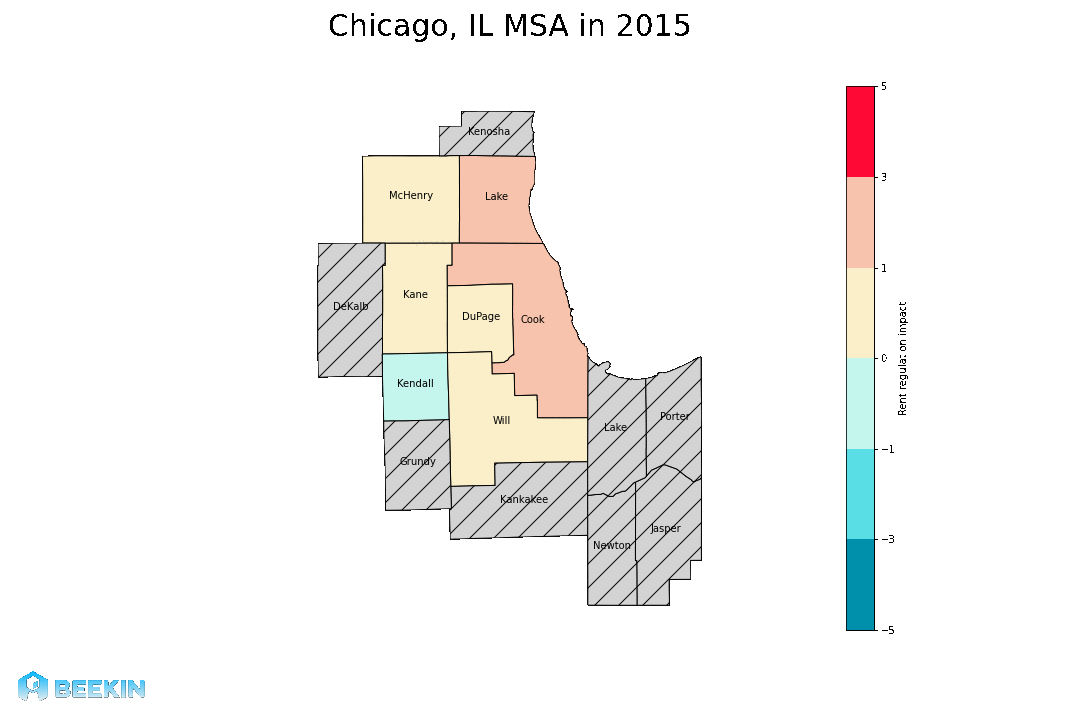

Denver
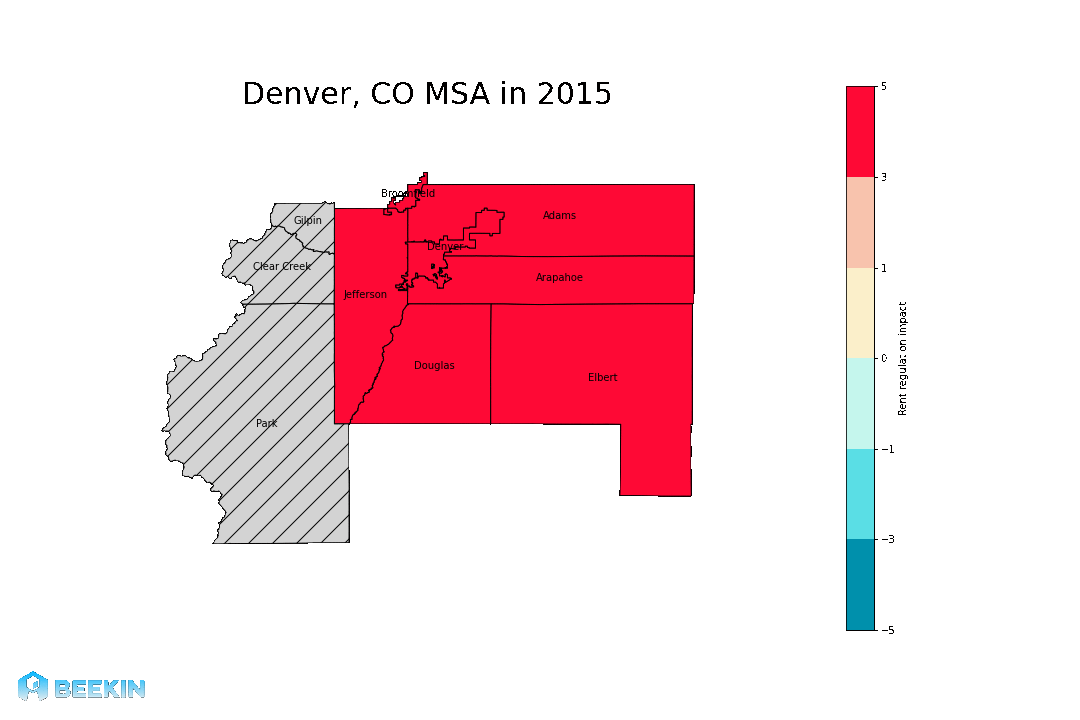
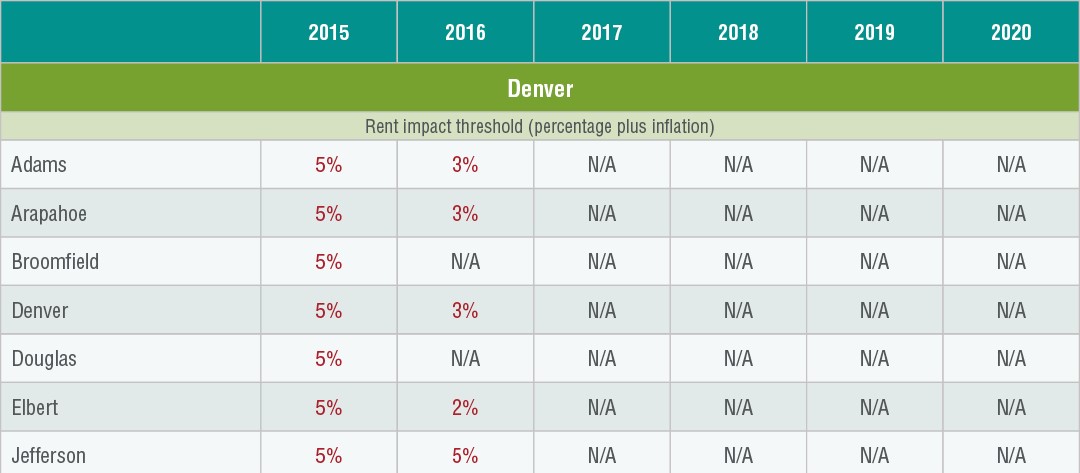
Phoenix


San Francisco
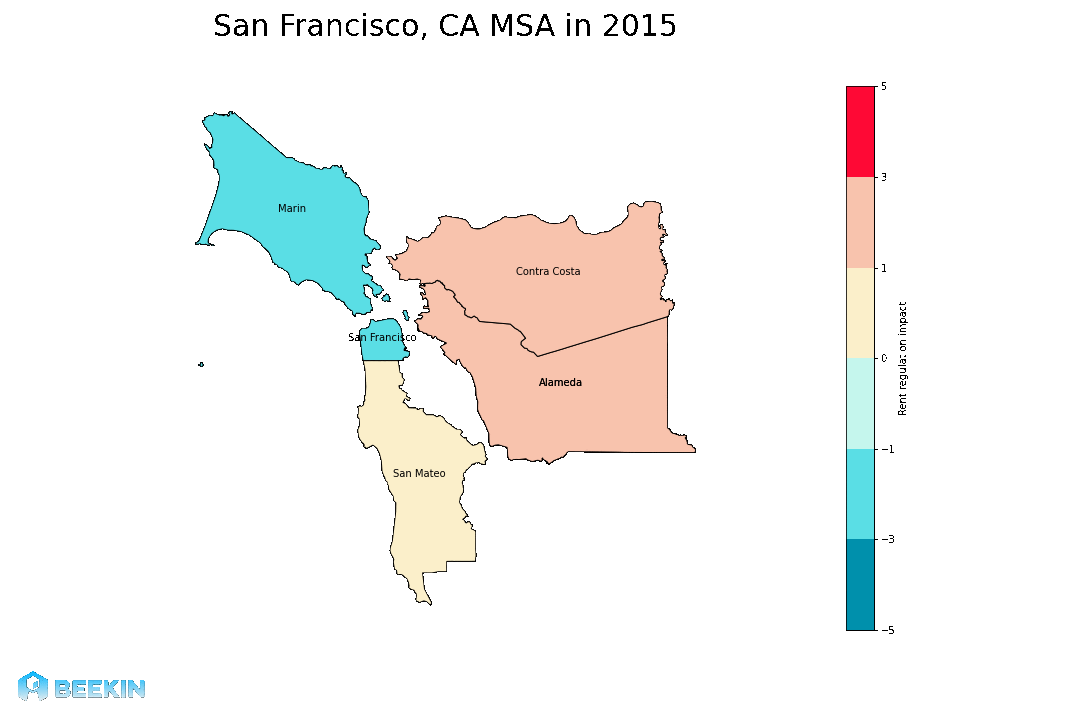
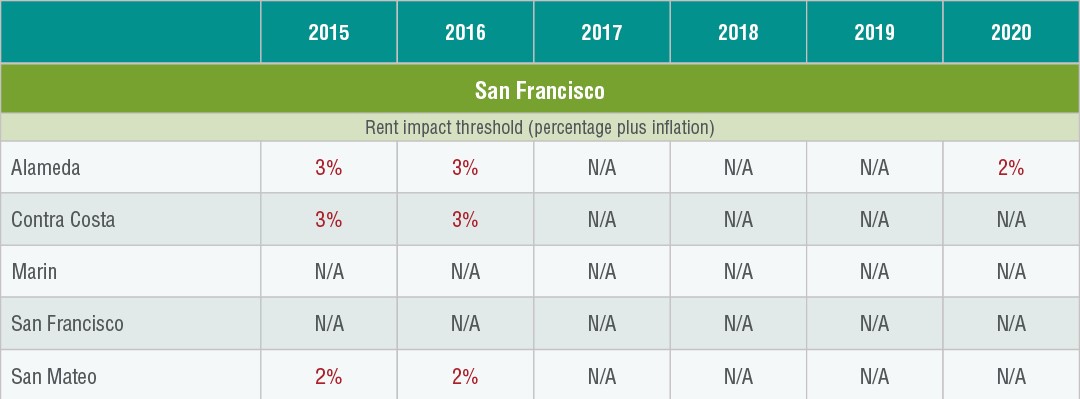
Seattle
